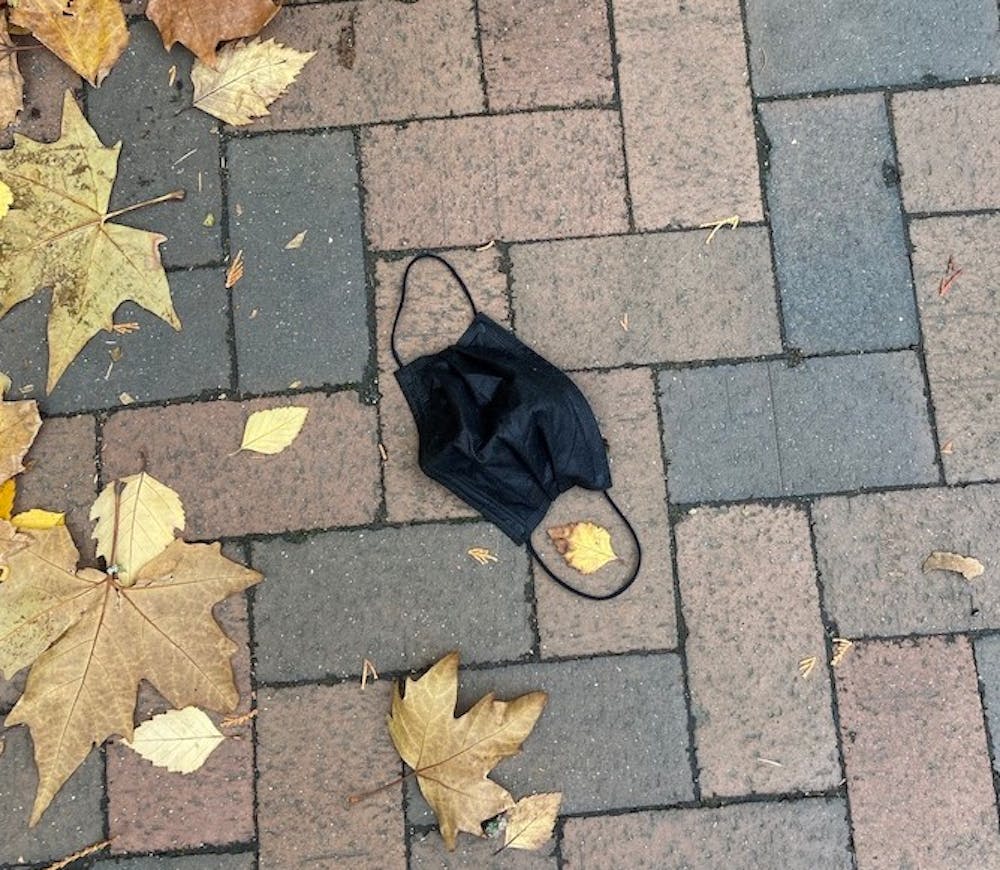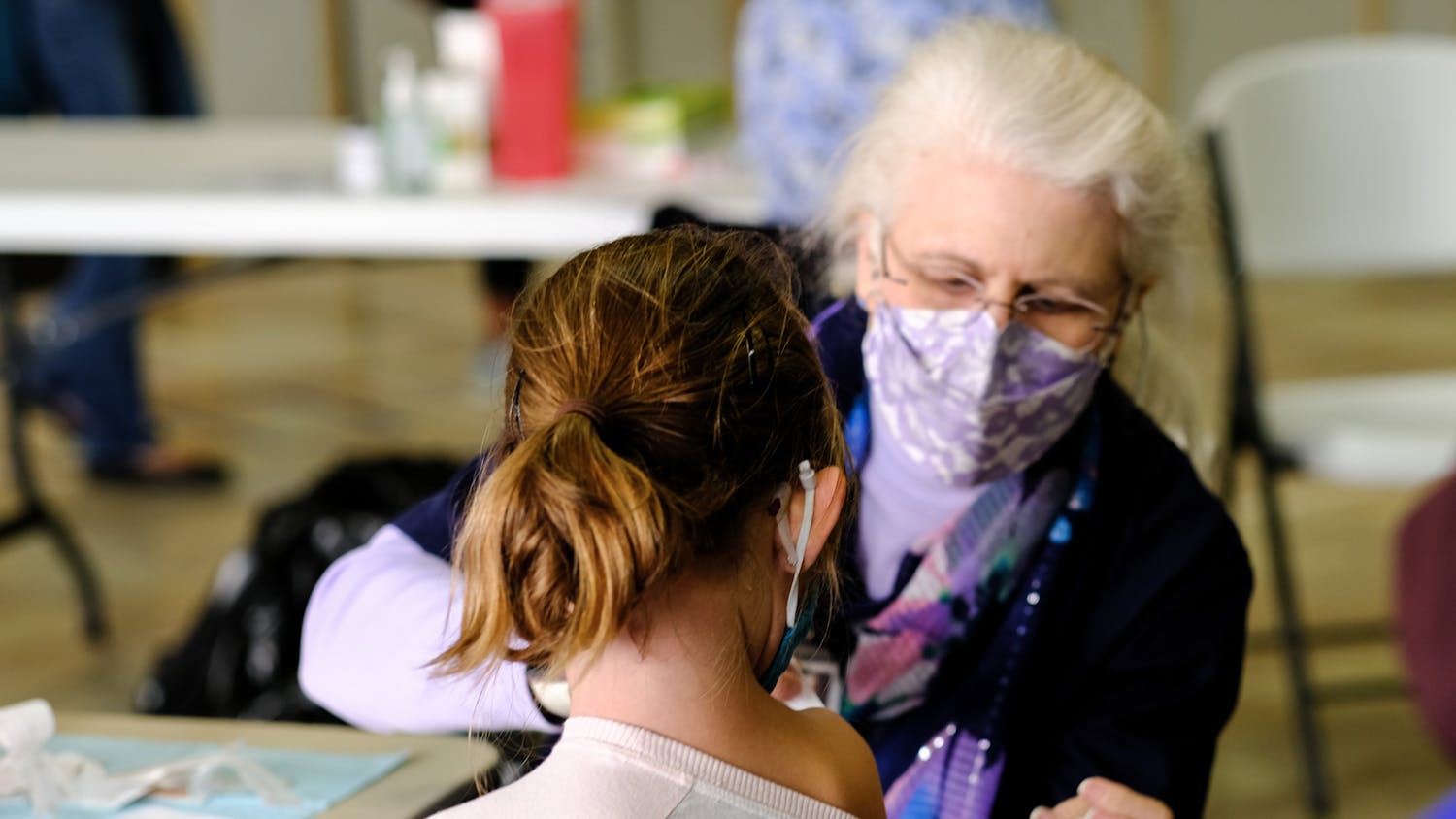Disposable masks are a new kind of waste found on Western Washington University’s campus now that everyone is required to wear a mask or suitable face covering in all indoor and public settings.
Since the COVID-19 pandemic began last year, there’s been an increase in the variety of face coverings that are worn to provide protection from the virus. Some are worn for comfort, some for convenience and some because studies show they provide optimal protection, but how much waste is created from those few inches of material that have become such a significant part of preventing the spread of COVID-19?
A study published in the Heliyon scientific journal in February of 2021 estimated that approximately 3.4 billion single-use face coverings are discarded every day.
When face coverings are not discarded properly, the non-biodegradable plastics in them can pollute terrestrial and marine ecosystems and even threaten human health through the consumption of the fish that live in those contaminated areas.
The study emphasized that the most important thing to keep in mind, whether you rarely wear a disposable mask or you wear one every day, is to make sure you throw them away properly.
Despite the environmental costs, many people still choose to use disposable face masks.
Evan Meyer, a second-year at Western, said he uses disposable masks because it’s easy for him to lose cloth masks.
“The disposable ones are way more useful for me because if I lose them, it’s not a huge deal,” Meyer said. “I don’t usually throw them away on purpose, they just disappear kind of like pencils did in high school.”
Alexandria Valdera, a third-year at Western, said she always wears a surgical mask with a cloth mask over it. According to the Centers for Disease Control, using both masks can increase the wearer’s protection by 90%.
Valdera said she will wear the disposable mask more than once before throwing it away.
“Usually I will use one surgical mask per week,” she said.
Like Valdera, many people try to get as much use out of their disposable masks as possible before disposing of them.
Shana Prine, a first-year graduate student at Western, said she usually uses one of her KN95 masks for a total of eight hours before throwing it away.
Some students end up wearing disposable masks on campus because they forgot or lost their mask and have to wear one that’s provided at the front doors of buildings in order to attend class.
“We didn’t want there to be issues with a student arriving to class and not being able to attend the session because they didn’t have one,” said John Thompson, the interim director of University Communications at Western.
Despite the many reasons that cause people to wear disposable masks, there are still many students at Western who choose to wear reusable masks.
Chante Oliver, a second-year student, said she rarely uses disposable masks.
“It’s less wasteful; it’s easier,” Oliver said.
Katie McNabb (she/her) is a senior reporter for The Front this quarter. She’s a fourth-year double-majoring in English and journalism. Her past reporting has focused on science and the environment. In her free time, she enjoys reading, exploring Bellingham with friends and experimenting with plant-based cooking.
You can reach her at katiemcnabb.thefront@gmail.com







